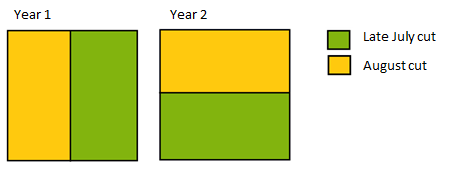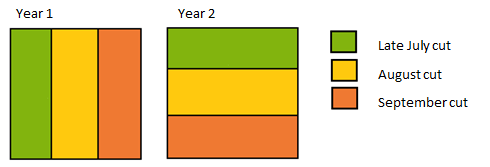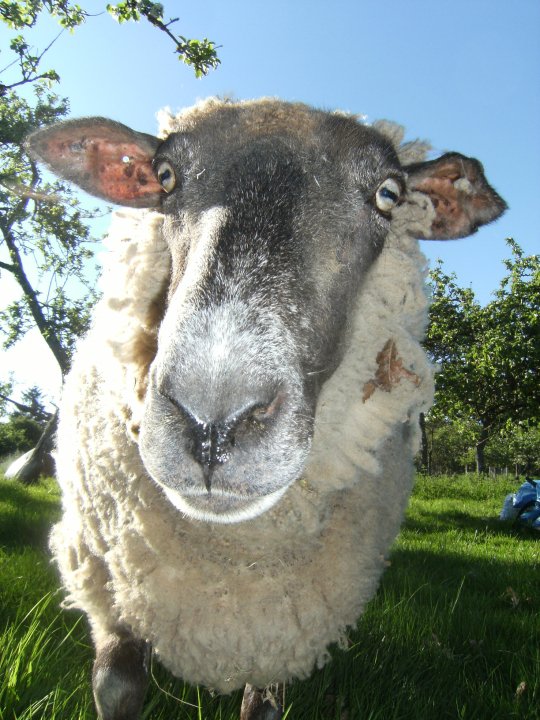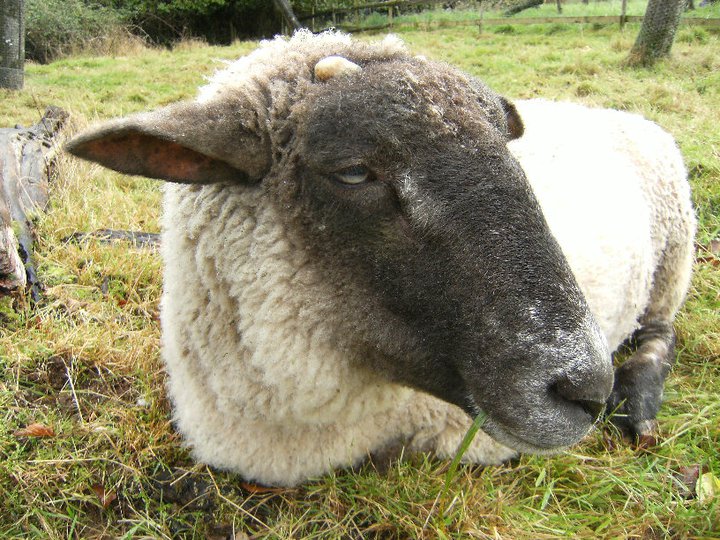Effective management prevents the grassland converting to scrub, helps support the floral diversity and enables you use and enjoy your orchard to its potential. An overly mown orchard floor is not great for the wildlife, but harvesting windfalls from long, wet, and nettle filled grass is not to be recommended either so to an extent, orchard floor management will be a compromise.
If you have a good knowledge of the plant communities your orchard supports then you can manage your grassland according to these. For example, if you know you have some orchids in that patch behind the gate, or some ladies smock in the gappy area in the far corner, you can tailor your mowing around them, making sure they have had enough time to flower and set seed. Otherwise, the following advice will generally help maintain the biodiversity you are likely to have.
- The grass needs to be cut at least once annually to prevent large woody plants establishing and converting your orchard into scrub. Whilst a low level of scrub can be good for biodiversity, if you let it encroach on your orchard too much your species rich grassland will become overgrown and dominated by tall grasses and scrub as the herbs and fine-leaved grasses are outcompeted. Scrub also makes it more difficult to manage your trees and harvest your fruit.
- Dry the grass cuttings on site and turn them to help the seeds disperse, then either remove the cuttings from the site, use them to mulch directly below your trees or compost them in a corner of your orchard out of the way.
- It is important to remove the grass cuttings from your orchard grassland, if they are allowed to rot down they will enrich your soil which can lead to a loss in plant diversity. Over time you will lose your wildflowers which prefer poorer soil and gain plants like nitrogen loving nettles instead. Low soil fertility, despite sounding like a bad thing, is actually a crucial feature of semi-natural grassland, which is of great conservation value.
- Herbicides and fertilisers should be avoided as far as possible, as should rolling and harrowing. Rolling and harrowing can harm the often shallow roots of fruit trees through compaction and mechanical damage. They can also disturb invertebrates in the soil, damage ant hills and, depending on the time of year, affect nesting birds or destroy fallen fruit that would be eaten by birds through the winter.
- In general, diversity of habitat correlates with diversity supported by the habitat. So within reason and practicality, the more varied you can make your orchard floor in terms of structure and plant communities, the greater diversity of insects, small mammals and birds could potentially be supported.
Staggered and late mowing, as well as leaving a strip of rough grassland will help create this habitat structure. Below is some information about these approaches as well as some sketches of what it might look like to apply these to your orchard. Importantly, these sketches do not need to be followed precisely, but aim to simply demonstrate the ideas; you do not need to mark any areas out or fence anything off, but instead use this as a rough guide. Equally there is no harm mowing in pathways or picnic spaces into any of these areas, it is important that you manage your orchard in a way that suits your use of it, be this recreation, the fruit, for biodiversity or a mixture of all of these.
- + Staggered mowing
With some staggered cutting you can diversify the structure of your orchard grassland and improve the conditions for plant species richness.
To encourage maximum floral diversity, try mowing your orchard in sections at different times between July and the end of August. This can be as simple as cutting in two sections at different times in the summer, or as many as you have the time or inclination for.
Mowing in stages prolongs the flowering season of your orchard, allowing all flowers an opportunity to set seed for next year, and also enables wildlife to move aside and resettle locally.

In the above example the orchard is split into two, cutting half the grass in late July, the other half in August, and rotating this from year to year.
- + Late mowing
Mowing orchard grassland becomes more difficult late in the season as the stems are a bit more dry and tough, but there are advantages to keeping an area or strip of your orchard uncut until September. Keeping late cut areas of your orchard reduces disturbance to bird and insects alike and can also give late flowering plant species enough time to flower and set seed for the following year.
Remember, if you cut annual flowers before they have a chance to set seed, you might not be able to enjoy them next year.

In this example you roughly divide your orchard in 3, staggering the cutting from late July to September, and rotating this grid each year.
- + Rough grassland
If you have the space to accommodate this, letting a small area of your orchard develop into rough grassland can provide great habitats to encourage biodiversity. This is the sort of grassland with generally taller, tuftier grass, and can be achieved simply by leaving a strip of grass unmown for 2-3 years at a time. Although rough grassland is generally less rich in plant species, it does provide good habitat for invertebrates, small mammals such as wood mice and field voles, and reptiles, which in turn can attract other species such as bats, owls and other birds of prey.
Good places to allow this sort of grassland to develop are the corners of your orchard and along the hedgerows. These areas tend to have fewer fruit trees anyway.
You will need to cut areas of rough grass every 2 or 3 years to prevent them from turning into scrub.
- + Grazing
Grazing
The alternative to cutting the pasture in your orchard is grazing. Grazing an orchard has a number of advantages over mechanised mowing, but there are also things that are important to consider before allowing sheep or cattle to graze your orchard.
Benefits of grazing:
- Grazing at an appropriate level benefits the sward structure of your orchard grassland, with a mixed grass length that is great at creating microhabitats for biodiversity.
- Grazing reduces the chances of rough grasses and scrub emerging, giving small herbs, flowers and fine leaved grasses a good chance at competing and flourishing.
- Grazing means you don’t have to mow! This means no burning of extra petrol, no worrying that it has rained on the day you had set aside to mow and less disturbance to many species living and nesting in your orchard.
Things to be careful of if grazing:
- Heavy trampling around the base of trees should be avoided as this will create conditions for competitive species such as thistles, docks and nettles to invade, as well as damaging the tree roots.
- Sheep can selectively eat flowers, so if you want to maintain your flower diversity it might be worth fencing an area off from spring to August to give your flowers chance to set seed.
- For most grazing animals the juicy tissue below the tree bark is just too tasty to resist, but being nibbled can seriously damage and even kill your fruit trees. Fencing around the trunks of your trees can be time consuming, but is essential if you want your orchard to remain an orchard.




